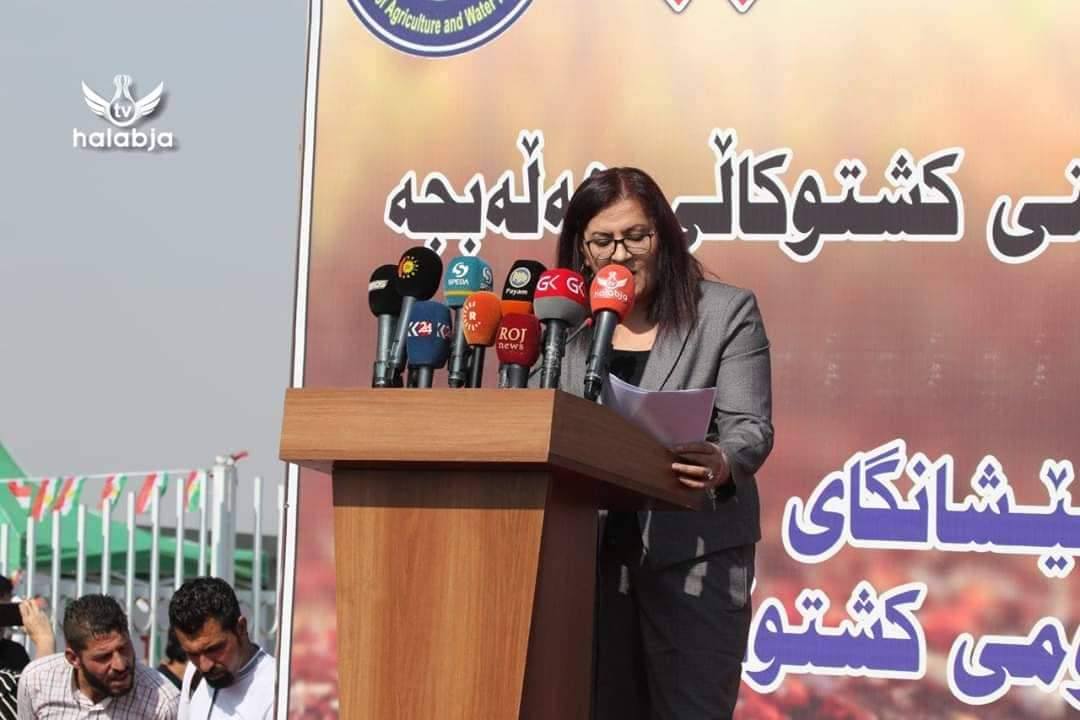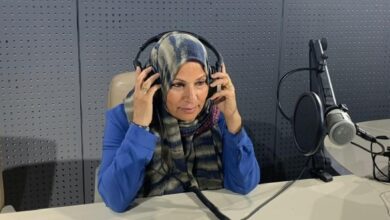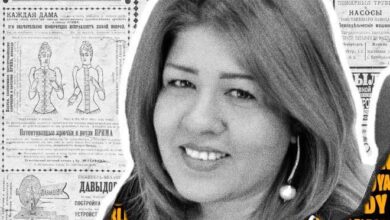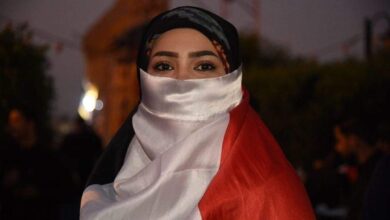Female reporters in the northern autonomous region of Iraqi Kurdistan are just as enthusiastic about conflict reporting as their male colleagues are. But they face many more challenges getting there.
Robar Ahmad, 34, is a female journalist who was working at an Iraqi Kurdish media outlet during the recent security crisis sparked by the extremist group known as the Islamic State, or IS. She asked her superior if she could also be sent to the front lines of the fighting – the city of Mosul, which was controlled by the extremist group is only around 100 kilometres away from Iraqi Kurdistan.
But Ahmad’s manager told her she could not go, explaining that he was worried about her being kidnapped and that he felt that women were too weak to go to war and certainly shouldn’t be on the front line.
“I wanted to go to the battlefield and I was sure I could do that,” Ahmad says. “I know the work of journalists on the front lines is difficult. But it is not beyond women’s abilities. If they had allowed me to go, I believe I might even have done a better job than the men. I have energy and can work long hours. But this wasn’t enough for my managers. If I am ever given the opportunity again, I will go.”
Ahmad eventually quite her job at this outlet and started working for another media organisation. But by the time she did so, the fight against the IS group was over.
Kali Ameen is one of the few local women who have been given permission to go to the front lines. She remembers all of the tragic scenes she has captured with her camera very well. She will often discuss her work on the front line with colleagues, but she finds that she cannot talk to female colleagues about it because none of them have had the same experiences.
The adventurous journalist was there, at most of the battles against the extremist Islamic State group in places such as Kirkuk, Mosul, Afrin, Kobane, Qamishli and Manbij.
“At the start, I felt that there weren’t any female journalists covering news from the battle fronts and that’s why I decided do this kind of work,” Ameen explains. “When I arrived there, I felt that this was not going to be an easy thing to do. I used to be a reporter but at the front line I also had to carry a camera and take pictures.”
The reason Ameen had to do both jobs was because none of her colleagues wanted to go with her; they didn’t want to be held responsible if anything happened to her.
“It is true that it is more dangerous for women,” Ameen concedes. “They may be arrested and it is very exhausting.” Ameen herself was held in custody for eight hours at one stage.
But in fact, she believes society’s response to female reporters who make this choice is almost more challenging. “When my mother found out I was going to the front, she said that she wouldn’t take care of my child, to try to force me to change my mind,” Ameen says. “But then my mother-in-law said she would do it.”
Diarey Mohammed, who heads the Metro Centre for Journalist Rights and Advocacy in Iraqi Kurdistan says that there haven’t been any complaints made about women not being given permission to do war reporting. But that doesn’t mean the Centre is not concerned about it, he says.
“We clearly feel that there is a gap and we have talked about it during our meetings with the media outlets,” Mohammed said. “We certainly believe women are capable of doing this kind of coverage.”
Mohammed points to sacrifices made by female journalists in the area, including Shifa Gardi (also known as Shifa Zikri Ibrahim) who was killed by a roadside mine in 2017, and Deniz Furst, who died after being hit by shrapnel during attacks by the IS group in 2014.
The Kurdistan Journalist’s Syndicate doesn’t keep any statistics on media outlets who do not, or do, allow female staff to do war reporting. But Nazakat Hama Saeed, who is responsible for registering violations against journalists in the region for the Syndicate, says that there are many reasons as to why this might happen. “These are related to the ways that different media outlets work, to the local culture and the way that our society perceives women. It also has to do with the fact that media outlets here are not very good at training reporters for working on the front line,” she says.
The security crisis caused by the extremist IS group has shown that the profession has a weakness in this area. At the start of the conflict, Iraqi Kurdish journalists rushed to the front lines to report and many were wounded, and even killed, as a result of their lack of experience and training. In fact Mariwan Hama Sayeed, the founder of the Metro Centre, who also works as a media consultant, believes that local journalism courses and schools need to introduce modules on war reporting, as well as train reporters in first aid and personal safety.
Not all Iraqi Kurdish media outlets have these problems though. The head of correspondents at local channel and website, NRT, Ghamkeen Mohammed Kareem, says that they don’t prevent female reporters from going to the front lines or from covering other violent confrontations.
“Two of the channel’s female correspondents covered the war against the IS group and attacks on the Kurdish region by the same group,” she says. “But they only went there for one day. We knew the war would go on and we knew we’d need people there all the time. We felt it as safer to send younger male and female reporters, and only for one day at a time.”
This article is written by Rangen Salam. She is a journalist in Halabja, Iraq





